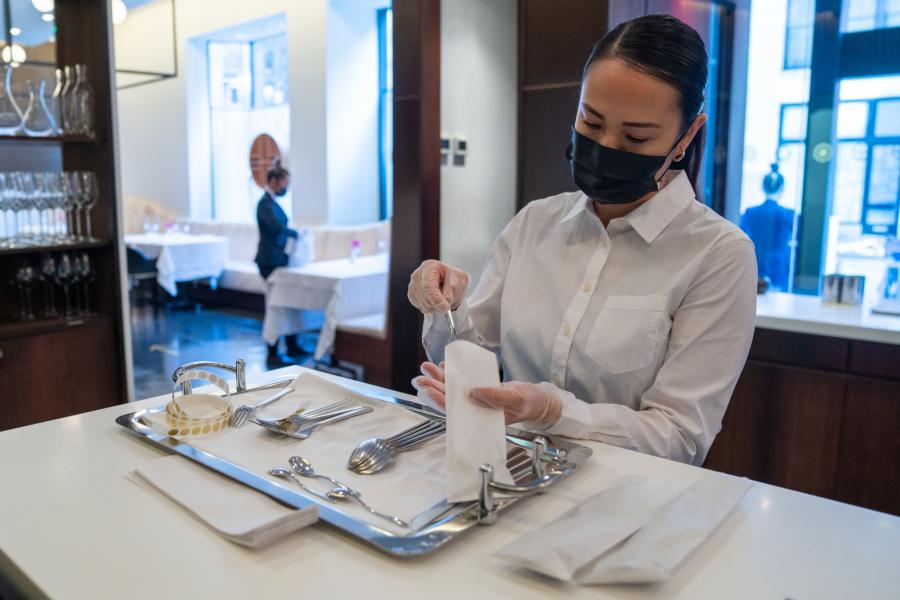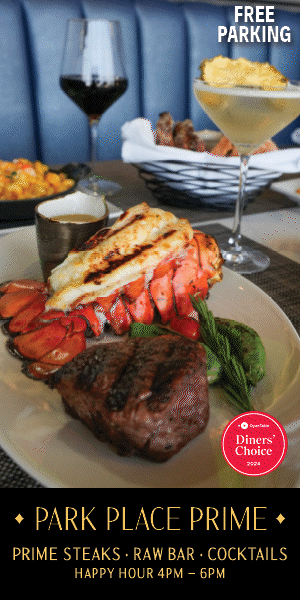, SBA Administrator Isabella Casillas Guzman today announced key details on application requirements, eligibility, and a program guide for the Restaurant Revitalization Fund (RFF). The restaurant industry has been among the hardest-hit sectors during the economic downturn caused by the COVID-19 pandemic. To help bring jobs back and revive the industry, the American Rescue Plan, signed into law by President Joe Biden, established the $28.6 billion Restaurant Revitalization Fund at the U.S. Small Business Administration (SBA). The SBA will administer the funds to the hardest-hit small restaurants.
“Today, we are starting the process to help restaurants and bars across the country devastated by the pandemic, and this is our message: Help is here. With the launch of the Restaurant Revitalization Fund, we’re prioritizing funding to the hardest-hit small businesses – irreplaceable gathering places in our neighborhoods and communities that need a lifeline now to get back on their feet,” said SBA Administrator Guzman. “And, thanks to clear directives from Congress, we’re rolling out this program to make sure that these businesses can meet payroll, purchase supplies, and get what they need in place to transition to today’s COVID-restricted marketplace.”
Administrator Guzman emphasized, “We’re also focused on ensuring that the RRF program’s application process is streamlined and free of burdensome, bureaucratic hurdles – while still maintaining robust oversight. Under my leadership, the SBA aims to be as entrepreneurial as the entrepreneurs we serve – and that means meeting every small business where they are, and giving them the support they need to recover, rebuild and thrive.”
Under this announcement, details on application requirements, eligibility, and a program guide are now available in English at www.sba.gov/restaurants or in Spanish at www.sba.gov/restaurantes.
Ahead of the application launch and over the next two weeks, the SBA will establish a seven-day pilot period for the RRF application portal and conduct extensive outreach and training. The pilot period will be used to address technical issues ahead of the public launch. Participants in this pilot will be randomly selected from existing PPP borrowers in priority groups for RRF and will not receive funds until the application portal is open to the public.
Following the pilot, the application portal will be opened to the public. The official application launch date will be announced at a later date. For the first 21 days that the program is open, the SBA will prioritize reviewing applications from small businesses owned by women, veterans, and socially and economically disadvantaged individuals. Following the 21-day period, all eligible applicants are encouraged to submit applications.
The groundwork for this announcement is the result of a comprehensive effort to reach out to diverse stakeholders in order to understand the needs and barriers restaurants face in accessing emergency relief aid.
“Local restaurants and bars are being served very good news today,” said Erika Polmar, Executive Director of the Independent Restaurant Coalition. “These guidelines were crafted by the SBA after conversations with independent restaurant and bar operators across the country. We are grateful to the SBA for their hard work to make this process as accessible as possible in a short period of time. It is clear the SBA and the Biden Administration care deeply about ensuring businesses struggling the most can quickly and effectively use this relief program, and we look forward to continued conversations and collaboration to ensure this fund works as intended for the independent restaurant and bar community.”
Community business leaders from underserved communities also welcomed RRF assistance as much-needed economic relief and are working with their broad membership bases to navigate the grant application process.
“In addition to historically having less operating liquidity and revenue than almost any other small business demographic, Black-owned restaurants received significantly less stimulus funding during the COVID-19 pandemic, heightening challenges and leading to disproportionate closures,” said Ron Busby, Sr., president and CEO, U.S. Black Chambers, Inc. “The USBC believes this initiative and collaboration with the SBA will bring needed resources and relief to these often underserved businesses to aid in stabilization, recovery and ultimately, strengthen our economy.”
In addition to restaurant groups and leading advocacy groups for underserved business communities, the SBA has engaged national and state trade associations, and other small business stakeholders in recent weeks to understand their concerns about relief programs.
“Small and independent craft breweries are vibrant community gathering places that can be found in nearly every congressional district in the U.S. and contribute to manufacturing, hospitality, retail, tourism, and agricultural industries,” said Bob Pease, president and CEO, Brewers Association. “We are pleased to work with the SBA to promote the Restaurant Revitalization Fund landing page and its available resources, and assist the breweries hit hardest by COVID-19 secure much needed additional relief to help them survive the pandemic and prepare for the restart of the economy.”
At all levels, the SBA will continue engaging with stakeholder communities to inform and design delivery of financial assistance programs. As the SBA builds and prepares to roll out the program, this dedicated SBA website is the best source for up-to-date information for eligible restaurants interested in the RRF.
Program details of the Restaurant Revitalization Fund
The American Rescue Plan Act established the Restaurant Revitalization Fund (RRF) to provide funding to help restaurants and other eligible businesses keep their doors open. This program will provide restaurants with funding equal to their pandemic-related revenue loss up to $10 million per business and no more than $5 million per physical location. Recipients are not required to repay the funding as long as funds are used for eligible uses no later than March 11, 2023.
Supplemental documents
Who can apply
Eligible entities who have experienced pandemic-related revenue loss include:
- Restaurants
- Food stands, food trucks, food carts
- Caterers
- Bars, saloons, lounges, taverns
- Snack and nonalcoholic beverage bars
- Bakeries (onsite sales to the public comprise at least 33% of gross receipts)
- Brewpubs, tasting rooms, taprooms (onsite sales to the public comprise at least 33% of gross receipts)
- Breweries and/or microbreweries (onsite sales to the public comprise at least 33% of gross receipts)
- Wineries and distilleries (onsite sales to the public comprise at least 33% of gross receipts)
- Inns (onsite sales of food and beverage to the public comprise at least 33% of gross receipts)
- Licensed facilities or premises of a beverage alcohol producer where the public may taste, sample, or purchase products
How to apply
You can apply through SBA-recognized Point of Sale Restaurant Partners or directly via SBA in a forthcoming online application portal.
Registration with SAM.gov is not required. DUNS or CAGE identifiers are also not required.
If you would like to prepare your application, view the sample application form. You will be able to complete this form online. Please do not submit RRF forms to SBA at this time.
Additional documentation required:
- Verification for Tax Information: IRS Form 4506-T, completed and signed by Applicant. Completion of this form digitally on the SBA platform will satisfy this requirement.
- Gross Receipts Documentation: Any of the following documents demonstrating gross receipts and, if applicable, eligible expenses
- Business tax returns (IRS Form 1120 or IRS 1120-S)
- IRS Forms 1040 Schedule C; IRS Forms 1040 Schedule F
- For a partnership: partnership’s IRS Form 1065 (including K-1s)
- Bank statements
- Externally or internally prepared financial statements such as Income Statements or Profit and Loss Statements
- Point of sale report(s), including IRS Form 1099-K
For applicants that are a brewpub, tasting room, taproom, brewery, winery, distillery, or bakery:
- Documents evidencing that onsite sales to the public comprise at least 33.00% of gross receipts for 2019, which may include Tax and Trade Bureau (TTB) Forms 5130.9 or TTB. For businesses who opened in 2020, the Applicant’s original business model should have contemplated at least 33.00% of gross receipts in onsite sales to the public.
For applicants that are an inn:
- Documents evidencing that onsite sales of food and beverage to the public comprise at least 33.00% of gross receipts for 2019. For businesses who opened in 2020, the Applicant’s original business model should have contemplated at least 33.00% of gross receipts in onsite sales to the public.
When to apply
Priority period Days 1 through 21 | SBA will accept applications from all eligible applicants, but only process and fund priority group applications. See “Priority groups” below. During this period, SBA will fund applications where the applicant has self-certified that it meets the eligibility requirements for a small business owned by women, veterans, or socially and economically disadvantaged individuals. See “Set asides” below. |
Open to all applicants Days 22 through funds exhaustion | SBA will accept applications from all eligible applicants and process applications in the order in which they are approved by SBA. |
Priority groups
- A small business concern that is at least 51 percent owned by one or more individuals who are:
- Women, or
- Veterans, or
- Socially and economically disadvantaged (see below).
- Applicants must self-certify on the application that they meet eligibility requirements
- Socially disadvantaged individuals are those who have been subjected to racial or ethnic prejudice or cultural bias because of their identity as a member of a group without regard to their individual qualities.
- Economically disadvantaged individuals are those socially disadvantaged individuals whose ability to compete in the free enterprise system has been impaired due to diminished capital and credit opportunities as compared to others in the same business area who are not socially disadvantaged.
Set asides
- $5 billion is set aside for applicants with 2019 gross receipts of not more than $500,000
- An additional $4 billion is set-aside for applicants with 2019 gross receipts from $500,001 to $1,500,000
- An additional $500 million is set-aside for applicants with 2019 gross receipts of not more than $50,000
*SBA reserves the right to reallocate these funds at the discretion of the Administrator.
Funding amount
Payment calculations
Calculation 1: for applicants in operation prior to or on January 1, 2019:
- 2019 gross receipts minus 2020 gross receipts minus PPP loan amounts
Calculation 2: for applicants that began operations partially through 2019:
- (Average 2019 monthly gross receipts x 12) minus 2020 gross receipts minus PPP loan amounts
Calculation 3: for applicants that began operations on or between January 1, 2020 and March 10, 2021 and applicants not yet opened but have incurred eligible expenses:
- Amount spent on eligible expenses between February 15, 2020 and March 11,2021 minus 2020 gross receipts minus PPP loan amounts
For those entities who began operations partially through 2019, you may elect (at your own discretion) to use either calculation 2 or calculation 3.
Maximum and minimum amounts
SBA may provide funding up to $5 million per location, not to exceed $10 million total for the applicant and any affiliated businesses. The minimum award is $1,000.
Gross receipts
For the purposes of this program, gross receipts does not include:
- Amounts received from Paycheck Protection Program (PPP) loans (First Draw or Second Draw)
- Amounts received from Economic Injury Disaster Loans (EIDL)
- Advances on EIDL (EIDL Advance and Targeted EIDL Advance)
- State and local grants (via CARES Act or otherwise)
- SBA Section 1112 payments
Allowable use of funds
Funds may be used for specific expenses including:
- Business payroll costs (including sick leave)
- Payments on any business mortgage obligation
- Business rent payments (note: this does not include prepayment of rent)
- Business debt service (both principal and interest; note: this does not include any prepayment of principal or interest)
- Business utility payments
- Business maintenance expenses
- Construction of outdoor seating
- Business supplies (including protective equipment and cleaning materials)
- Business food and beverage expenses (including raw materials)
- Covered supplier costs
- Business operating expenses
Get help with your application
For assistance preparing your application, you can access the following:
- Call center support: 1-844-279-8898 (Hours: Monday-Friday 8am-8pm ET)
- Your local SBA District Office


